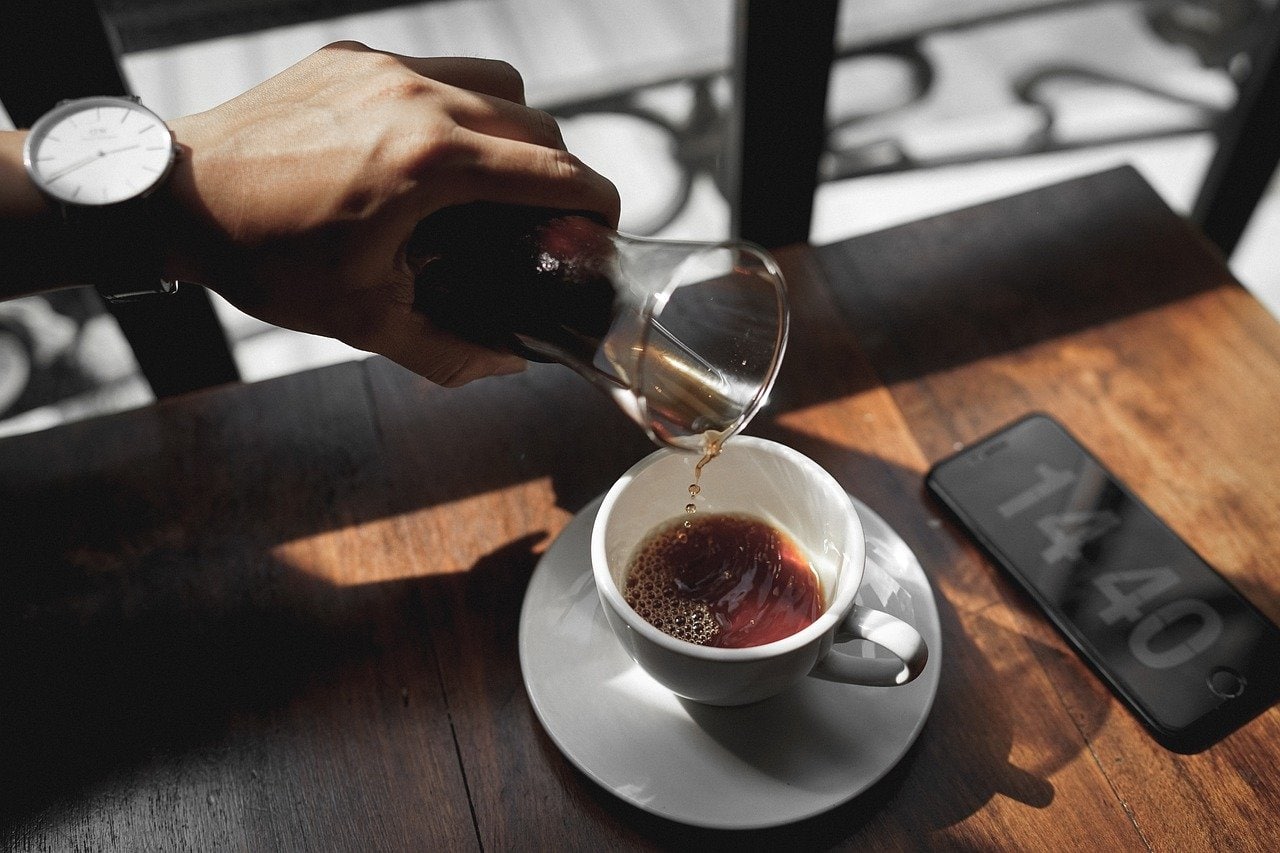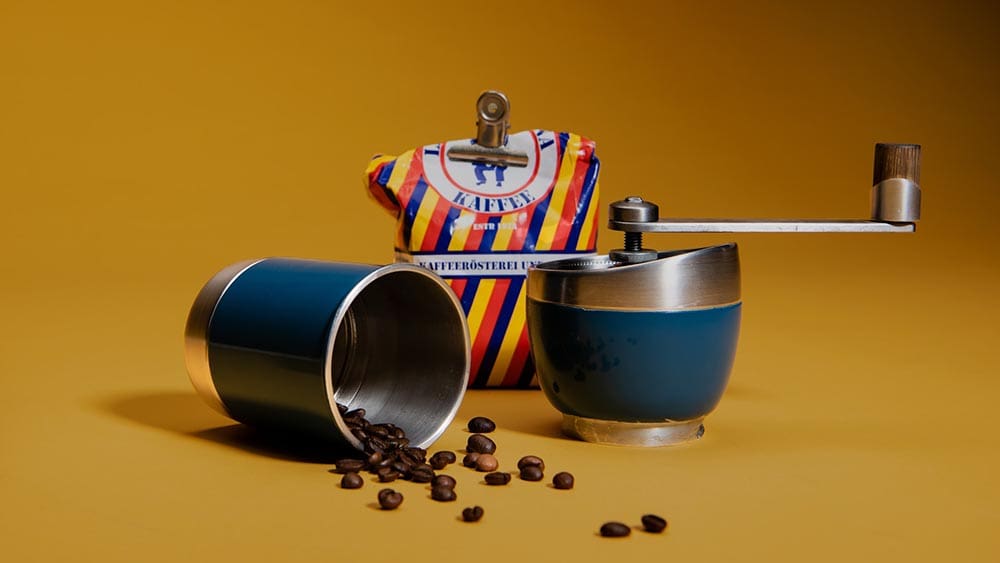
You come home from the grocery store after a long day. You’re exhausted, and all you want is to make a fresh pot of the coffee you just bought. You pull the coffee from the grocery bag, and you can almost feel the energy coming back to you. You open the bag of coffee and – oh, no. You had meant to buy ground coffee, but you got the whole bean coffee.
You don’t want to go back to the store, and you don’t have to. We are about to show you six smart ways to grind coffee beans without a grinder.

Top 6 Ways to Grind Coffee Beans Without a Grinder
1. Blender
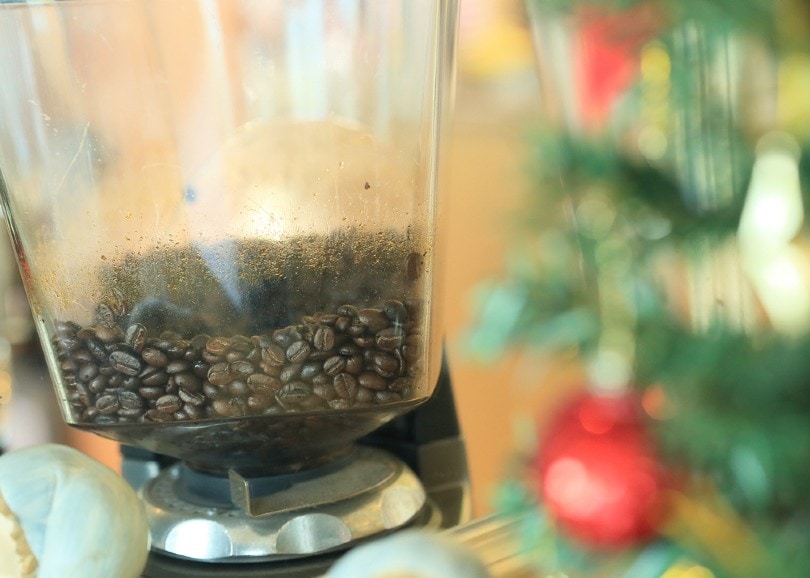
As the cornerstone of smoothie and shake preparation, a blender is something that almost everyone owns. It can do everything from making delicious frozen beverages to blending up your favorite nut butter. Blenders also have one other superpower. They can grind coffee beans in a pinch. There are pros and cons to blending your coffee, but you can’t beat the convenience.
If you’re stuck with whole-bean coffee, and you don’t have or can’t find a grinder, one of the easiest ways to grind coffee beans is to simply blend them in the blender. Before you toss them in and blend them, make sure that you tilt the blender a little. That will help the beans come into contact with the blades better.
If you don’t want your coffee to be too bitter, make sure you pulse the blender. This keeps the friction from the blades from heating the oils in the beans and giving them an undesirable flavor. While any blender will do, keep in mind that your beans will be a little more roughly ground and will have a different flavor than you’re used to.
Some blenders have a setting or attachment specifically for coffee. If yours has this, you can feel free to use it to grind your coffee beans.
2. Mortar and Pestle
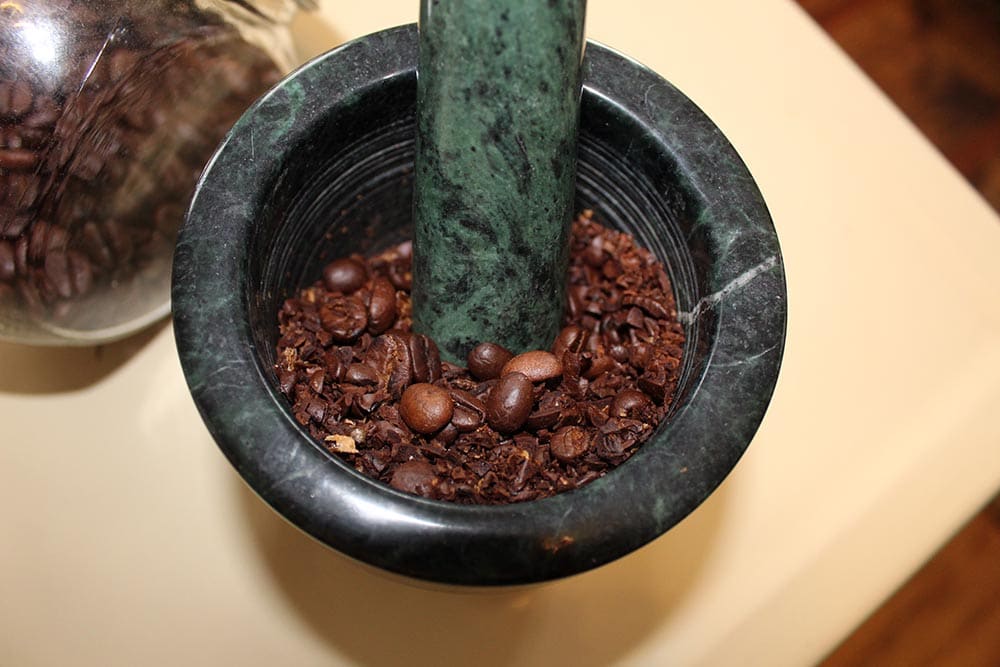
Probably the most time-intensive method, the mortar and pestle have been used for centuries around the world to grind spices, sauces, salsas, and even meat. This makes it the ideal candidate for grinding your coffee beans.
The upside to this method is that you can get an even grind and better flavor. The downside is that not only is it time-consuming to grind your coffee beans with a mortar and pestle, but it’s also energy-intensive. You’re also a lot less likely to own a mortar and pestle than most of the other tools on this list. Still, if you have one and you’re dedicated to flavor, the mortar and pestle won’t disappoint you.
Any mortar and pestle will work, but using a less porous one, such as a ceramic mortar and pestle, will prevent a build-up of bitter coffee flavor. Other mortar and pestles will still work, but ones made of some stones and wood will absorb the oils from the coffee and emit bitter coffee tastes into anything else that you grind.
3. Hammer
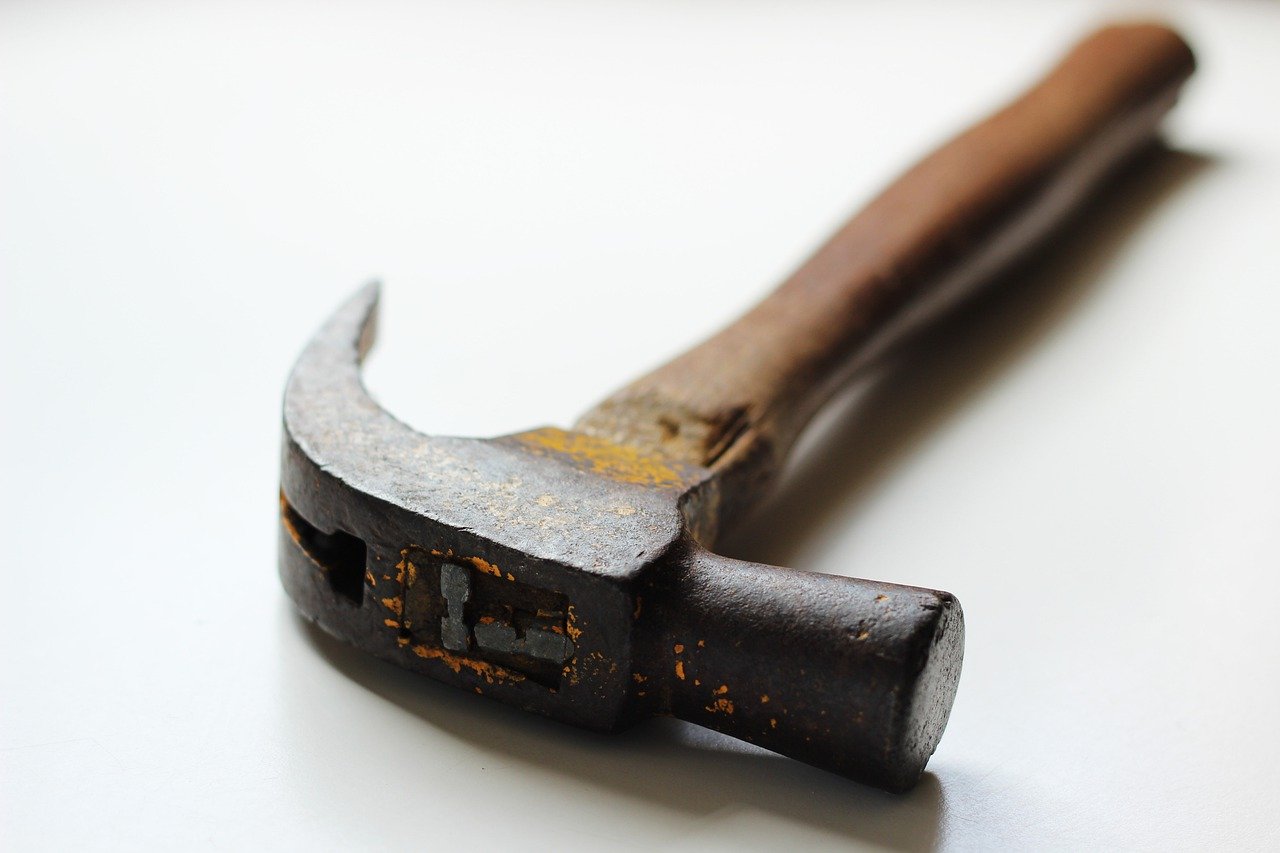
This method uses a meat tenderizer to mash your beans into something drinkable. It’s a rough method, but if you are desperate for caffeine it will get the job done. It’s possibly the loudest method on this list.
You will need a ziplock bag, a hard, flat surface like a counter or a cutting board, and a meat tenderizing hammer. Take the number of beans you want to use and put them into the ziplock bag. Close the bag and place it on a hard surface. Proceed to hit the beans until they’re ground. If necessary, you can rotate and flip the bag to pound the coffee beans more thoroughly.
This method will work in a pinch, but it’s not without its downsides. The first flaw in this method is that you can’t ensure an even grind. You will have varying-sized bean chunks when you are done, and that will change the flavor of your coffee. It’s also labor-intensive and time-consuming, but without the results of the mortar and pestle.
When deciding how much coffee to put into the ziplock bag, make sure that you use a small amount. This will help you create a more thorough and even grind than trying to use a bunch. Don’t worry if you didn’t grind enough; you can always grind more.
4. Rolling Pin

We tend to associate rolling pins with baking. You use them to make bread, cakes, pastries, rolls, and more. If the recipe requires dough, chances are that there is a rolling pin involved. Rolling pins have another unintended use if you have nothing else. You can grind coffee beans by crushing them with a rolling pin.
Using a rolling pin is very similar to using a hammer. They both require ziplock bags and a hard surface. With a rolling pin, instead of hitting it, you crush the beans by rolling the rolling pin back and forth. This yields similar results to the meat tenderizer, though it may take more time.
You can speed up the process by alternating between rolling the beans and pounding them with the hammer. This is probably one of the least recommended methods, and we would consider it a last resort if you don’t have any of the other items on this list.
5. Food Processor

Are you someone who needs a little more power than what a blender can provide? Do you own a food processor? If so, then you have access to yet another method to grind coffee.
Similar to a blender, a food processor can be used to grind coffee beans. Put the amount of coffee you want to brew into the food processor and pulse the coffee beans for a coarser grind. Like the blender, you should tilt the food processor a little to get more of the beans.
There aren’t a lot of differences between a food processor and most blenders in terms of performance, so if you have both and are wondering which one to use, go with whichever one is more readily available.
6. Spice Grinder

Spice grinders are used to grind cinnamon, pepper, nutmeg, and pretty much any other spice you can imagine. Because they have powerful blades to cut up hard seeds and other plant matter, they are a great substitute for a coffee grinder.
Like coffee grinders, spice grinders can be motorized or manual depending on your tastes. While a burr grinder would be ideal, most spice grinders will work in a pinch. If it’s an automatic grinder, make sure to pulse your coffee beans if possible for a more uniform grind. If you are using a manual grinder, grind your beans like normal.
While spice grinders can grind the coffee, it isn’t highly recommended because the residue of spices can change the flavor of the coffee, although if it’s all you have it will do.
Other Coffee Grinding Methods
If you are wondering if there are any other ways to grind coffee beans, the short answer is yes, although we can’t recommend them on account of ineffectiveness or, in some cases, unnecessary danger.
Pounding the coffee beans with a knife, like you might do to crush garlic, is an example of a method that can be dangerous, but it also will yield an unsatisfactory cup of coffee. Trying to use knives for unintended purposes is not advised, especially when trying to crush something hard like a coffee bean.
Why do we grind coffee beans?
While you don’t technically have to grind your beans, the amount of time they would take to brew would be far too long. You would have to brew your coffee on the stove in a pot. The reason that you grind your beans is so that the water can reach as much of each bean as possible.
Grinding exposes more of the oils in the beans to the water when brewing, but it also exposes more of the oils to the air, causing them to evaporate more quickly. Because of this, it is recommended to only grind as much coffee as you need for that cup. It can be tempting to grind enough for a day or more because of the amount of effort it takes, but doing so will compromise the freshness of your coffee beans.
What’s the difference between ground and whole bean coffee?
Coffee beans contain oils that give your coffee its flavor and aroma. Most of those oils are contained inside the bean itself. Grinding your beans releases those oils and allows them to be absorbed by the water when brewing. Once the oils in the beans have been exposed to the air, they begin to evaporate.
Buying whole beans and grinding them at home allows your beans, and thus the flavor of your coffee, to remain fresh longer. It might not be as expedient as buying pre-ground coffee, but the difference in flavor is apparent.
Buying pre-ground coffee beans makes early morning coffee a lot easier, but the coffee goes stale much quicker. Even the vacuum-sealed cans of coffee will lose flavor faster than whole beans.
SEE ALSO: Ground Coffee vs Whole Coffee Beans: What’s the Difference?
Conclusion
Whether you own a grinder or not, there may come a time where you find yourself with whole coffee beans and no coffee grinder, but that doesn’t mean you are without options. There are a lot of average kitchen items, and some not-so-average, that can be used to grind coffee beans.
While there are many different methods, two are superior to the rest. The best overall option is to use a mortar and pestle. Not everyone owns one of these, but if you do, you are aware of their superior grinding abilities. With a mortar and pestle, you will be able to get an even, coarse ground that will yield a flavorful cup of coffee. They’re also easy to clean, but make sure you’re using one with a smooth surface so that old coffee taste doesn’t seep into your other dishes.
The second method is to use a blender. With a blender, what you lose in quality you gain in speed and convenience. If you opt for the blender, remember that if you tilt the blender slightly and pulse it, you will get a more coarse, even grind and better flavor.
See Also: Can You Grind Coffee Beans in A Nutribullet? What to Know!
Featured Image credit: Stefan Lehner, Unsplash








